|
An ACS
Education - Understanding our Heritage
As can be imagined, Bishop Doraisamy had worked strenuously to collect and sort out the records of the Methodist Church in Singapore and Malaya, but faced serious problems because many of them had been lost or destroyed. This is not surprising if we remember that the Methodist Mission office (which housed them at the pre-war Wesley Church premises) was looted when the Japanese occupied Singapore. Then, there was a period after the war when records were gradually built up, but sadly, in 1983, prior to the removal of the Methodist Headquarters at Coleman Street to Mt Sophia, vast quantities of “old and useless” files and records were consigned to the incinerator! Although Bishop Doraisamy hastened to stop the carnage, enough damage had been done. However, he and a number of hardworking pastors and laymen were able to put together the earliest story of the Methodist Church in a book, “Forever Beginning” in celebration of the Church’s centenary in 1885. It is a publication which befits the event and contains many interesting and important items of information which the Methodist community can be proud of. The Archives as
a Resource
In countries like
Singapore, historical documents rarely go back more than a
couple of hundred years and are usually written in ink, or
printed on paper made from wood fibres which, unless carefully
conserved are apt to deteriorate, especially in a tropical
climate. Documents in ink are known to have become unreadable
because of its high iron oxide content that is apt to smudge
over a period of time. The Archives over which I preside has a
number of notes and letters which, sadly, are of little
practical value – at least until new technologies are developed
to overcome the problem. Paper documents, unless acid-free, also
have a tendency to become discoloured, brittle and almost too
fragile to work with. In the
tropics, these have to be deposited in climate-controlled
conditions. Modern technology has, of course, been a timely intervention, so far. Documents can be microfilmed, scanned and copied in DVDs or produced in hard copy for more robust and convenient use. The Methodist Archives has been able to preserve some of our holdings such as the complete Malaysia (Methodist) Message since its inception in 1891 and the Methodist Church Conference Journals from the first meetings in 1894. They have proved a valuable source of information about the development of the Methodist Church in Singapore (and Malaysia), although the picture is very far from complete. Of more relevance to the ACS, we can be glad that we have the complete annual magazines from 1929 to the present (except for the war years), as well as the Anglo-Chinese School Journal Vol. I, 1889-1890 and some of the earliest publications of the Singapore Anglo-Chinese School Magazine from 1899 to 1906, sourced from the British Library, thanks to loyal Old Boys in the UK. They have provided extremely valuable information about the School as it developed through the years. They are virtually the only continuous contemporary source of information, as most records were destroyed when the School buildings at Coleman Street and at Cairnhill were looted and declared “enemy property.” I am uncertain as to the disposition of post-war records. Therefore, the pre-war magazines stood me in good stead when it came to compiling the story of the ACS. Of course, a lot of supplementary materials, chiefly the Malaysia (Methodist) Message and the Annual Conference Journals, had to be referred to. However, without the name lists in the earliest magazines, for example, we would not have been able to know who the pioneering ACSians were, and their achievements. The Excitement
of Research
I was surprised when he informed me that Lee Teng Hwee was a Java Chinese boy who had studied in the ACS during the years 1888-1891 and had gone to the United States to study, and graduated from Yale University. Further research disclosed the fact that the young Teng Hwee had impressed Rev Oldham with his ability and attitude and therefore facilitated his higher education in America, even providing him with passage money. At Yale, he followed a humanities course and studied Greek, Latin, French, the arts of the Renaissance and English Literature. He graduated in 1899 with a BA degree. Soon after, he responded to a call by Bishop Thoburn for teachers to serve in Methodist schools in this country. He returned to Singapore and taught for a couple of years at the ACS Penang, but, being intensely idealistic and patriotic as many Nanyang Chinese were, he decided to go to China to contribute to the modernisation of the country. Arriving in Shanghai in 1904, he was appointed supervisor of Fudan Public School by its founder who wished to train selected high school students in higher level subjects in preparation for admission to European universities for specialised subjects. In 1917, when Fudan Public School became a university with a modern curriculum in the humanities, natural sciences, business and modern European languages, he became its first President. It was a unique private institution staffed mainly with teachers who had been trained in the West. Its curriculum was more relevant to the building of a new post-imperial China. A book published by Fudan University celebrating the centenary of Fudan education in 2005 gives details about his life and educational philosophy. Although he made a number of trips to Singapore and Java mainly on fund-raising missions, his contribution to education in China continued until he passed away in 1947. Thus did research discover one of early ACS’s distinguished sons. Another interesting, but less dramatic example of research was on the unsuccessful effort to establish the Anglo-Chinese College, a project that Bishop Oldham was personally committed to. Not only did he send Rev J.S. Nagle to head the Anglo-Chinese School and be the Executive Secretary of the College project, he also pledged $10,000. What made the story difficult to relate was the absence of documents and in-depth descriptions of the project, partly because the ACS had ceased to publish a magazine, while only brief items appeared in the Malaysia Message. It was only when I visited the Methodist Archives in Madison, N.J. to do research on a Methodist project that I was able to source information on the College project, and Rev Nagle’s rôle. Information I gathered at Madison, together with what I was able to derive from local sources, indicated that the building fund campaign was quite successful, with half a million dollars from well-wishers.
But, all was not gloom and doom. Rev Nagle had actively appointed an increasing number of graduate teachers in the ACS, thereby ensuring that the education which included new subjects like Greek, Roman History, Physics, German, French and Malay, together with physics apparatus sourced from America, would provide the students with a liberal education barely appreciated at the time. The Value of
Written Records However, most of the contemporary School magazines lack the narratives which preserve the life of the School, its triumphs as well as its heartaches. What are also missing are the thoughts of students carried by the essays from Primary and Secondary pupils which used to be an integral part of the publication, as well as in-depth write-ups about life in the School. In a sense, the soul is missing, and this is a pity. Of course, a picture is worth a thousand words, but without an accompanying narrative, even the best photographs will remain inert after a few years. Perhaps an enhanced appreciation of the heritage of the Schools will rectify this unfortunate lapse, even though it will call for greater effort. |
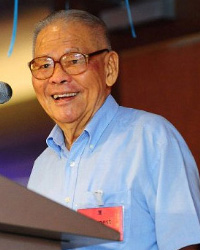 Some
time after retiring as Director of the RELC, I was approached by
the then Bishop of the Methodist Church in Singapore, Rev Ho
Chee Sin, to take over the responsibilities of Methodist
Archivist, as Bishop Emeritus Theodore Doraisamy had passed
away. Bishop Doraisamy had established an Archive in a small
basement room at the Methodist Centre at Mt Sophia, the fruit of
about ten years of work.
Some
time after retiring as Director of the RELC, I was approached by
the then Bishop of the Methodist Church in Singapore, Rev Ho
Chee Sin, to take over the responsibilities of Methodist
Archivist, as Bishop Emeritus Theodore Doraisamy had passed
away. Bishop Doraisamy had established an Archive in a small
basement room at the Methodist Centre at Mt Sophia, the fruit of
about ten years of work.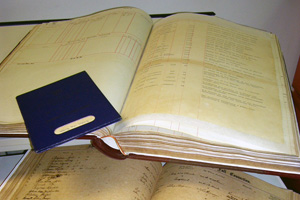 I
I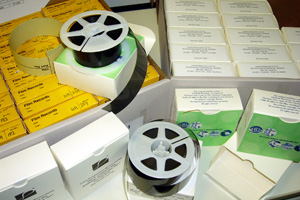
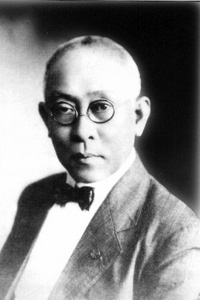 One
of the earliest and most illustrious examples was the story of
Lee Teng Hwee (Li Denghui in pinyin), a name which appeared in a
list of prize winners on a number of occasions in the earliest
publications of 1890s.
One
of the earliest and most illustrious examples was the story of
Lee Teng Hwee (Li Denghui in pinyin), a name which appeared in a
list of prize winners on a number of occasions in the earliest
publications of 1890s.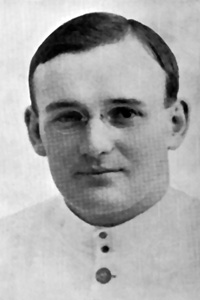 The
College Council which included Messrs Tan Kah Kee, Lee Choon
Guan, Chan Kang Sui and Tan Cheng Lock drew up a constitution
and regulations, and began negotiations with the Colonial
Government. In this, Rev Nagle played a key role, which was in
addition to his many duties as a missionary and Principal of the
ACS. Although the Government was initially in favour of a
college which prepared students for British universities, it did
not favour an American-type of degree-granting institution –
which is what the College Council had in mind. Eventually, the
proposal to found the Anglo-Chinese College was turned down, the
Government citing its intention to establish Raffles College to
commemorate the centenary of the founding of Singapore. Thus,
the mystery of the failed attempt to establish the Anglo-Chinese
College almost a century ago was brought to light for 21st
century ACSians.
The
College Council which included Messrs Tan Kah Kee, Lee Choon
Guan, Chan Kang Sui and Tan Cheng Lock drew up a constitution
and regulations, and began negotiations with the Colonial
Government. In this, Rev Nagle played a key role, which was in
addition to his many duties as a missionary and Principal of the
ACS. Although the Government was initially in favour of a
college which prepared students for British universities, it did
not favour an American-type of degree-granting institution –
which is what the College Council had in mind. Eventually, the
proposal to found the Anglo-Chinese College was turned down, the
Government citing its intention to establish Raffles College to
commemorate the centenary of the founding of Singapore. Thus,
the mystery of the failed attempt to establish the Anglo-Chinese
College almost a century ago was brought to light for 21st
century ACSians.